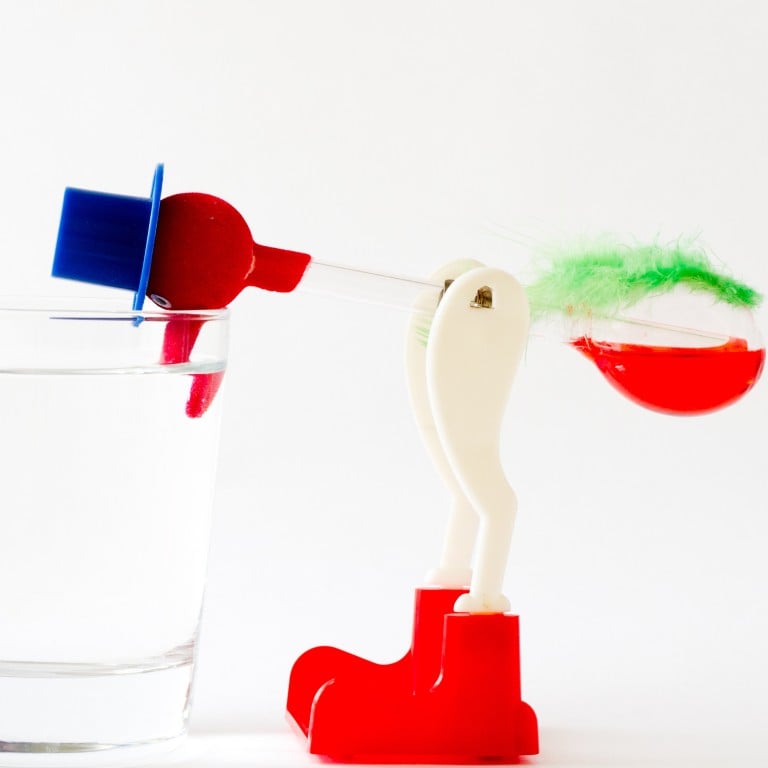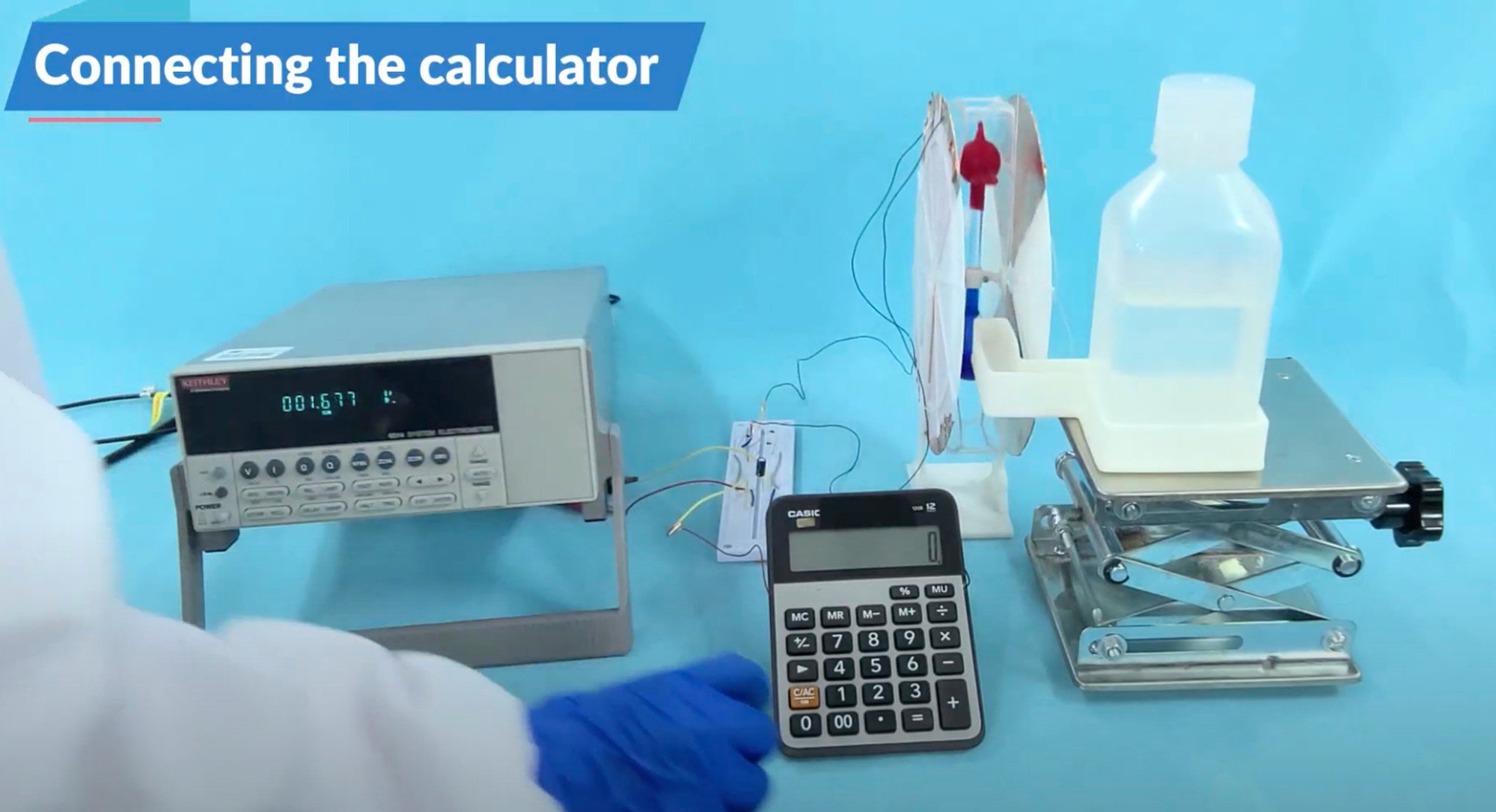
Beak power: how a toy that stumped Einstein is inspiring Chinese scientists to search for cleaner energy
- Simple physics behind vintage ‘drinking bird’ leads to ‘substantial renewable energy opportunity’, researchers say
- Evaporation-driven heat engine could someday power electric gadgets
A team of scientists from Hong Kong and mainland China have created a device that could pave the way to a new source of clean energy – an engine that can power small electronics through the process of water evaporation.
The device can run on 100ml (3.4 ounces) of water as fuel for 50 hours and produce an energy output of up to 100 volts, significantly more than previous studies that had tried to harvest evaporation energy.
“Using the prototype [of the generator], we power small electronics such as 20 liquid crystal displays (LCDs), temperature sensors and calculators in ambient conditions using water as fuel,” the article said.

The researchers are from South China University of Technology in Guangzhou, and Hong Kong Polytechnic University and City University of Hong Kong.
The team was inspired by the “drinking bird”, the classic scientific toy with a top hat that continuously dips into a glass of water thanks to the principle of thermodynamics. The device was invented by American chemist Miles Sullivan in the 1940s.
The drinking bird consists of a glass tube body with glass bulbs at both ends, with the bottom bulb containing a liquid with a boiling point of 40 degrees Celsius (104 Fahrenheit).
China resets relations with belt and road partners through green investment push
The top bulb, or head, is covered with a felt-like absorbent material. The bird oscillates on a rod fixed to a stand.
To begin the drinking movement, the bird’s beak is dipped into a glass of water. The water that comes in contact with the cloth begins to evaporate, making the head cooler than the base.
The pressure difference prompts the fluid in the base to rise towards the head. As the top becomes heavier, it tips back into the glass of water.
After tilting forward, the liquid flows back and the bird returns to an upright position. As evaporation continues in its head, the bird swings and drinks, continuously.
China’s clean energy boom ‘an example to the entire world’, IEA analyst says
Inspired by the decades-old curiosity, the research team decided to take the invention to another level by collecting mechanical energy at both sides of the bird. To accomplish this, they installed two triboelectric nanogenerator modules at either end.
“We use a natural, evaporation-driven heat engine inspired by a drinking bird toy to convert the latent heat of evaporation into slow-frequency motion and then convert the mechanical energy into electricity via a specialised triboelectric nanogenerator,” the team said.
Lead author Wang Zuankai, chair professor of nature-inspired engineering at Hong Kong Polytechnic University, said that while their study was proof of concept, the team hoped to develop devices that could convert water evaporation to electrical energy more efficiently.
“We can have an array of dozens of 3D-printed miniature drinking birds in layers to generate electricity simultaneously,” Wang said.
Another way to get the bird swinging is to direct sunlight to the bottom bulb which can be covered by photothermal material. The heat from the sunlight would cause the liquid inside to rise toward the head as it evaporated, prompting the bird to dip, he said.
He said the team could also apply a previously developed structure to the bird tube to speed up the movement of liquid to generate more electricity.


